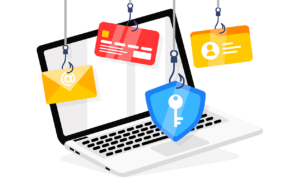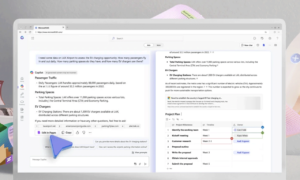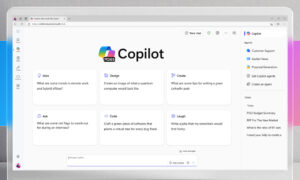Estimated Read Time: 5-7 minutes
Cloud computing isn’t just a tech upgrade; it’s a game-changer for operating, growing, and keeping up with (and getting ahead of) the competition. Let’s break down why moving to the cloud is one of the smartest decisions you can make.
- Flexibility: The cloud adapts to your needs instantly. Need more storage, faster processing, or new applications? You can scale up or down without heavy investments. Plus, your team can work from anywhere with an internet connection, keeping productivity high.
- Efficiency: Managing IT infrastructure is time-consuming and expensive. With the cloud, you eliminate many maintenance headaches and focus on running your business. Applications deploy faster, workflows run smoother, and you cut costs without sacrificing performance.
- Strategic value: Staying competitive means staying ahead of the curve. The cloud gives you access to cutting-edge technologies like AI, automation, and machine learning without requiring a massive investment. You can innovate faster, outpace competitors, and focus on growth.
But as you embrace the cloud, security must be a top priority. Let’s dive into what cloud security really means.
Understanding Cloud Security
Cloud security combines policies, technologies, and best practices to protect data, applications, and infrastructure from threats. You need a structured approach to ensure your business runs securely without disruption.
A strong cloud security framework helps you tackle cyber incidents like unauthorized access, data breaches, and disruptions. But don’t assume your cloud provider is handling everything. Security is a shared responsibility—and we’ll break that down soon.
Now that you know what cloud security is, let’s talk about why it matters for your business.
Why Cloud Security Matters
The cloud allows you to scale, but with that comes security risks. Moving your business to the cloud means rethinking how you protect data and prevent breaches.
Cloud providers secure the infrastructure, but the responsibility for protecting your data, managing user access, and configuring services correctly still falls on you. If a misstep exposes your data, the problem is yours to handle, not theirs.
With cyber threats becoming more advanced every day, you must implement strong security practices to protect sensitive data, meet compliance requirements, and avoid operational downtime. Cloud security isn’t optional—it’s your responsibility.
Before you can strengthen your defenses, you need to understand the most significant threats in the cloud.
Common Threats and Vulnerabilities
The cloud opens up new possibilities but also introduces security risks you can’t afford to ignore. Here are the biggest ones you need to watch out for:
- Data breaches: If sensitive data lands in the wrong hands, it’s game over. Hackers go after customer records, financial data, and business secrets. A breach could cost you not just money but also your reputation.
- Account hijacking: Weak passwords or phishing attacks can let someone take control of your cloud account. Once inside, they can steal files, impersonate you, or even lock you out of your own systems.
- Misconfigured settings: Not all breaches are caused by hackers breaking in—sometimes, they happen because doors were left open. If you don’t configure security settings correctly, you could expose your data without realizing it.
- Insider threats: Sometimes, the most significant risks come from within. Employees or contractors with too much access can unintentionally (or intentionally) cause leaks. One shared login or misused credential can create a security disaster.
But don’t worry. Recognizing these threats is the first step. Now, let’s look at how you can fight back with security best practices.
Cloud Security Best Practices
The cloud doesn’t have to be a security nightmare. If you follow these best practices, you can lock down your data and stay ahead of cyber threats.
- Data encryption: Encryption keeps your data unreadable to outsiders. Even if someone intercepts it, encryption ensures they can’t access it.
- Identity and access management (IAM): Not everyone in your organization needs full access. IAM helps you limit who can see and modify sensitive information.
- Regular security audits: Security isn’t a set-it-and-forget-it deal. You must continuously review your cloud security to find vulnerabilities before hackers do.
- Compliance checks: Regulations exist for a reason—to protect your customers and your business. Staying ahead of compliance rules ensures you meet industry standards and avoid fines and breaches.
- Incident response planning: Cyberattacks will happen. It’s just a matter of when. The difference between minor damage and a total disaster is having a solid incident response plan. A clear response plan helps you quickly detect, contain, and fix security issues.
- Disaster recovery: Even with top-notch security, things can go wrong. A solid disaster recovery plan ensures you can restore critical data and systems after an attack or failure.
But securing your cloud isn’t just about following best practices—it’s about knowing your responsibilities. That brings us to the shared responsibility model.
The Shared Responsibility Model
Many assume cloud providers handle security, but that’s not necessarily true. As we hinted earlier, you have a role in protecting your data.
Cloud providers manage infrastructure but don’t secure your files, accounts, or user access. If you don’t configure your security settings properly, your data is at risk—not theirs.
What's Your Responsibility
While every cloud provider may be different, here’s a simple breakdown of what you’re likely to be responsible for:
1. Your Data
Just because your files are in the cloud doesn’t mean they’re automatically protected.
What you must do:
- Encrypt sensitive files to make it difficult for hackers to read them if they were stolen.
- Set access controls to limit users from viewing privileged information.
- Back up critical data to ensure business continuity.
2. Your Applications
If you use any cloud apps, you are responsible for securing them as well.
What you must do:
- Keep software updated, as older versions may have vulnerabilities that hackers can exploit.
- Limit third-party app access to reduce the chances of unauthorized logins.
- Monitor for unusual activity to prevent potential data breaches.
3. Your Credentials
You can’t secure your accounts using weak passwords.
What you must do:
- Enforce strong password protocols to prevent unauthorized access.
- Use multi-factor authentication as an extra precautionary step.
- Implement policies that limit access based on roles and responsibilities.
4. Your Configurations
You’re responsible for setting configurations up correctly and monitoring them regularly.
What you must do:
- Disable public access to storage to prevent outsiders from accessing your files.
- Set up activity logs so you know who’s doing what in your cloud.
- Regularly audit permissions to ensure only the right users have access.
You must actively manage access controls, encryption, compliance, and monitoring. The strongest security comes from understanding your responsibilities and ensuring no gaps exist in your protection.
Let’s talk about how we can help you secure your cloud environment.
Don't Wait, Secure Your Cloud Today
Cloud security is complex, but you don’t have to figure it out alone. We help businesses like yours strengthen security, reduce risks, and stay compliant.
Our team provides expert security assessments, fixes vulnerabilities, and tailors solutions to fit your specific needs. Whether it’s IAM policies, compliance, or disaster recovery, we’ve got you covered.
Don’t wait for a breach to force action. Let’s upgrade your cloud security today.






